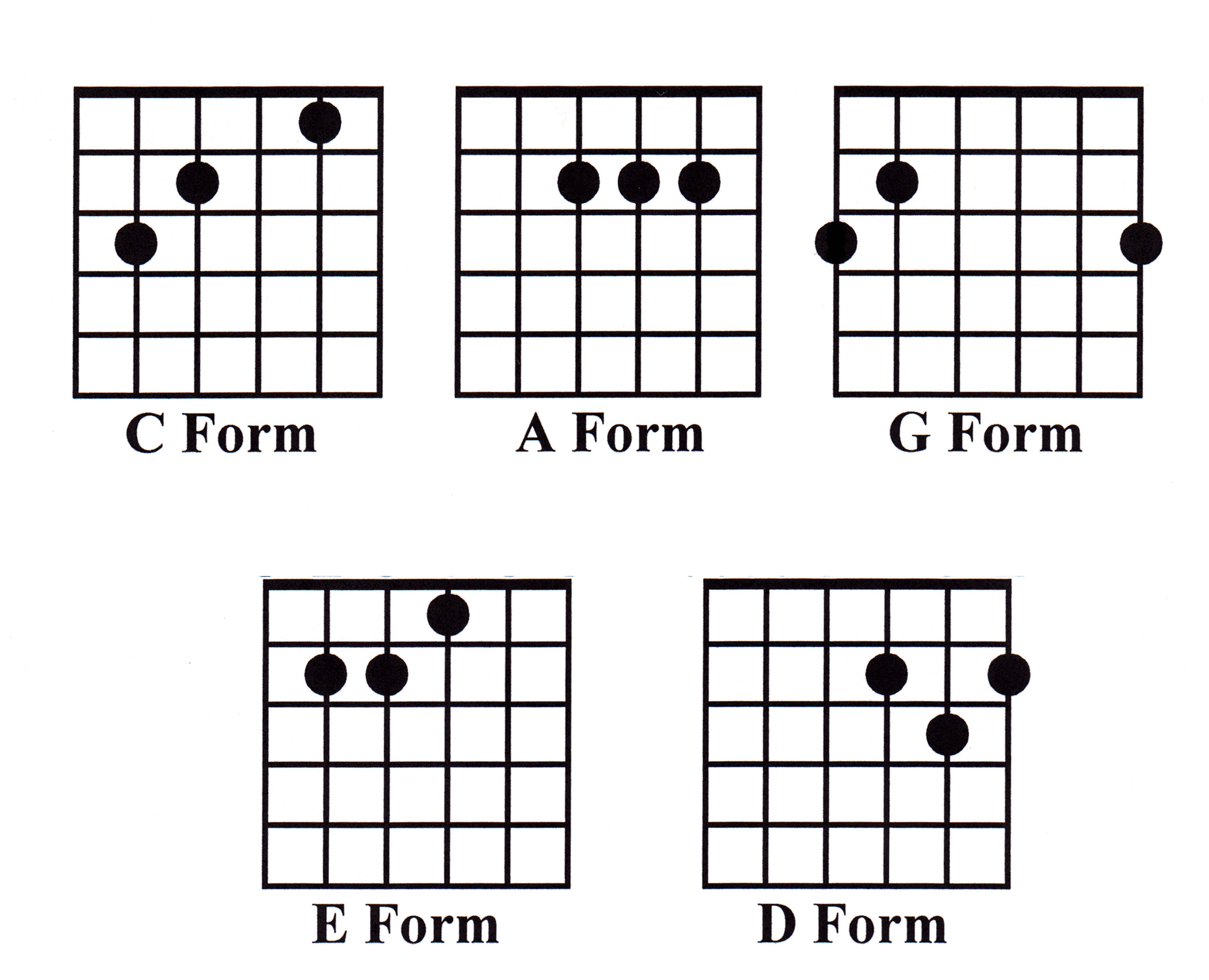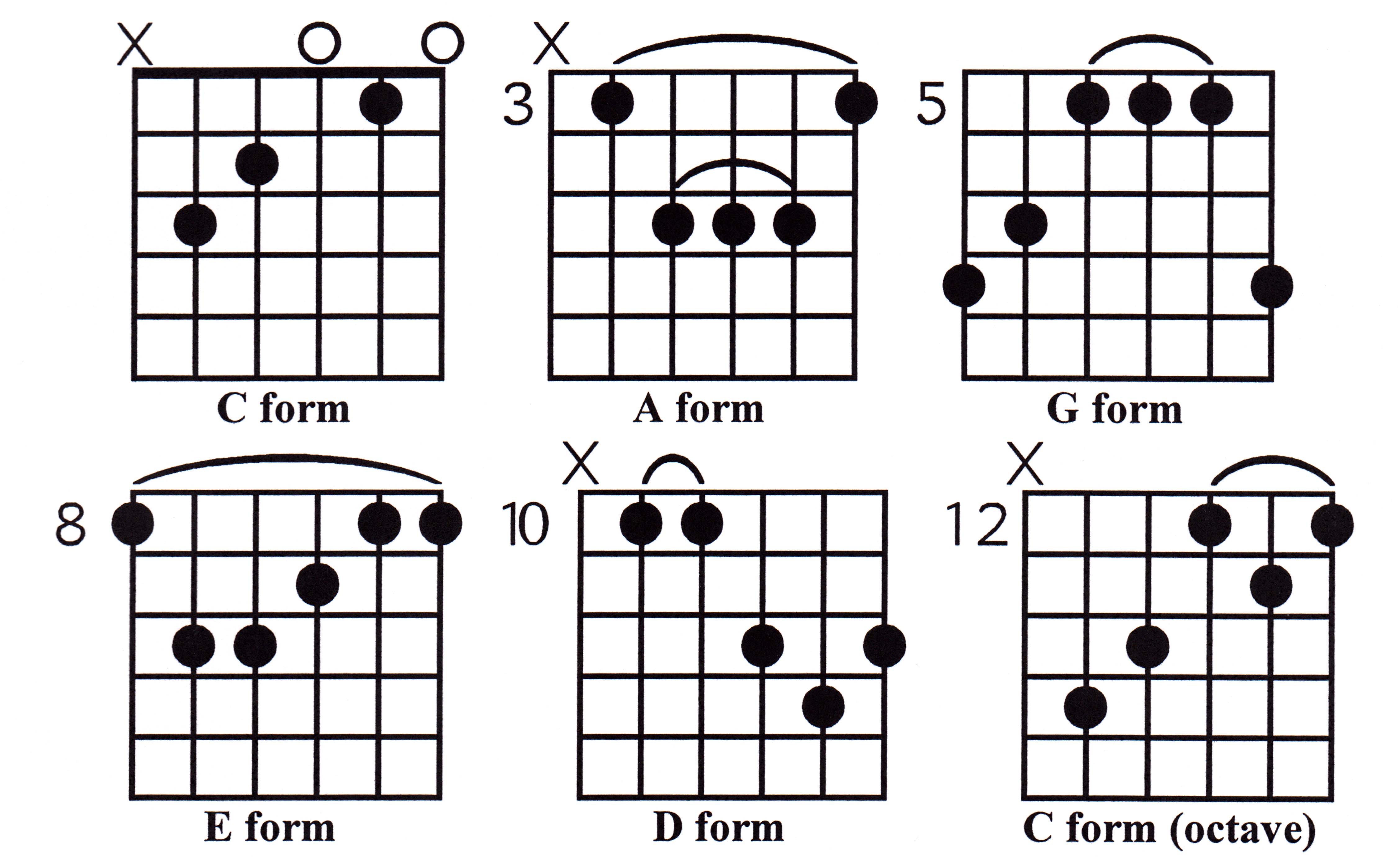
You may have heard of the CAGED system of chord construction. Maybe not. Many guitar players subscribe to this particular method as the basis of working out chord
types and shapes. It can be a useful tool and is one you should, at the very least, be familiar with. So, let's look at it.
Basically, CAGED is an acronym for the C, A, G, E and D chord forms you learned when you first picked up the guitar as the basis
for expanding your knowledge beyond the first few frets. It demonstrates how any given chord can be found pretty much everywhere on the fret board in a very
straight forward fashion using these shapes or forms.
So we begin with a touch of review. Below are the five chord shapes you already know:

Now, so you can see how this actually works, the next diagram demonstrates the C chord as it can be found moving up the fret board, using each of the five chord
shapes you already know.

As you play the various forms when progressing up the fret board, your first finger takes the place of the nut, kind of like a partial capo in some cases, and you adjust your other fingers to accommodate playing the remaining notes of each chord as they occur up the fret board. You'll readily recognize a couple right away, like the E form, played at the 8th fret, which is what comprises a full Barre chord.
If you look closely, you'll also notice the connections between any given position with the previous position and the following position in relation to what you are currently playing. It is this connected nature which the CAGED system reveals that is most important to helping you fully understand your fret board, how it can be "mapped out".
You have the C form sequence for playing the C chord all the way up the fret board to the octave position. Now play the A chord sequence up the fret board, beginning with the A form at the open position.
And so on through the remaining forms to complete the sequence at the octave. Do the same with each of the remaining three forms, working sequentially through the cycle.
Remember, you are spelling C-A-G-E-D, but starting on a different letter with each sequence. So the A sequence goes A-G-E-D-C-A, the G sequence G-E-D-C-A-G, and so forth.
While I do not personally find this the best system for chord construction, I find it useful in some instances. It never hurts to have one more tool to help you become more adept at understanding and really using your fret board. You gotta know where everything is without having to think about it too much. This tool is but one of many to help you achieve that end.
Now, go knock out some ideas based on this information!
See you next time.